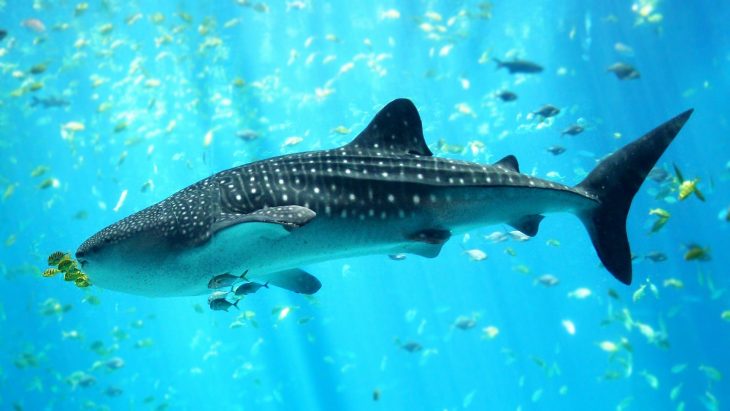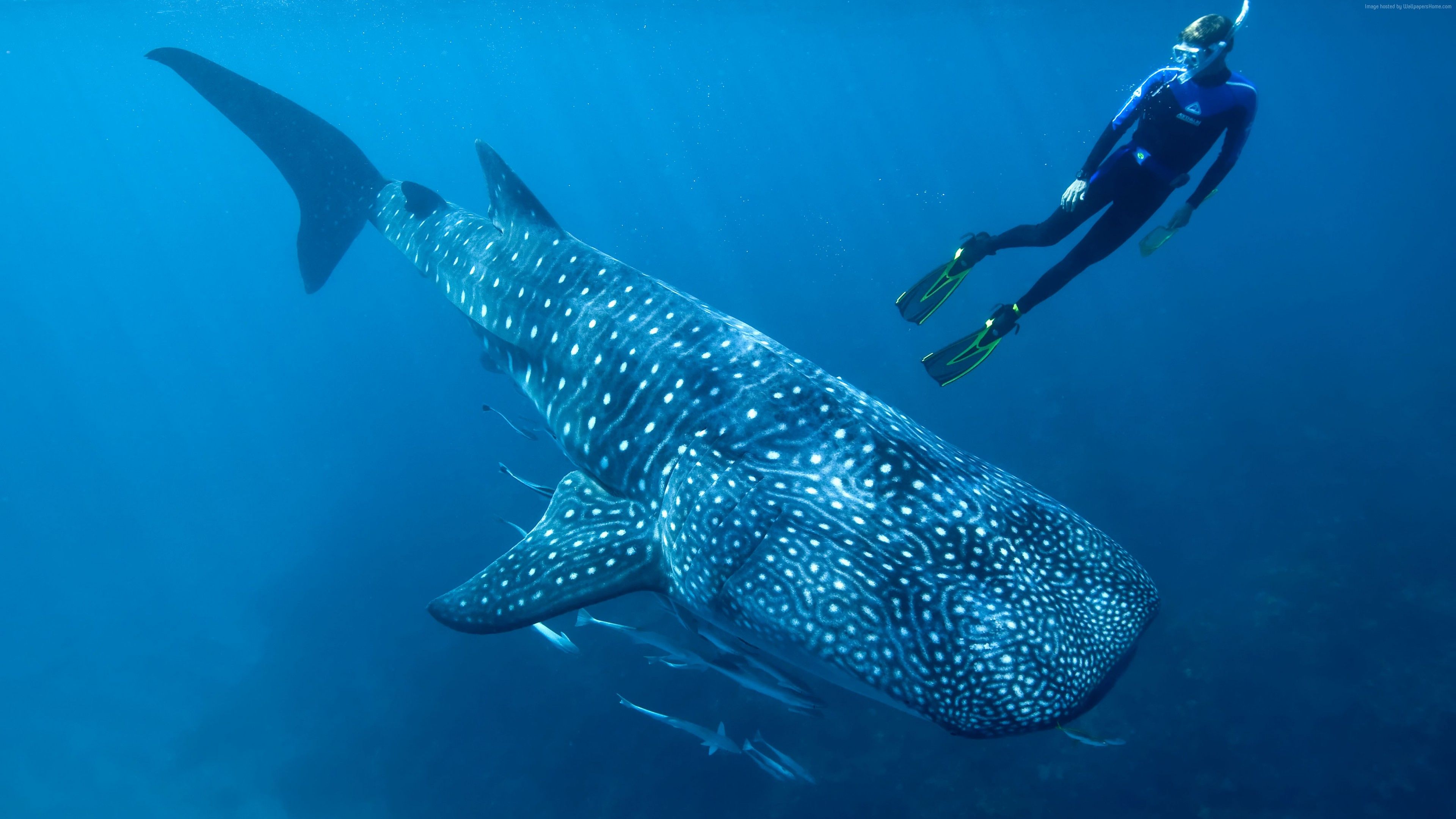
Whale sharks, despite their intimidating name, are a fascinating and integral part of our oceanic ecosystems. As the largest fish in the sea, their sheer size and graceful presence in the world’s warm waters have captivated marine biologists and sea adventurers alike. Here are 19 fun facts about these intriguing ocean giants that will enrich your knowledge and appreciation for these magnificent creatures.
Whale Sharks are the Largest Fish in the Sea
Reaching lengths of up to 18 meters (60 feet), whale sharks hold the title of being the largest fish species in the world. Despite their size, they’re known for their gentle, non-threatening behavior.
They Have Huge Mouths, but Tiny Teeth
Whale sharks have a mouth spanning up to 1.5 meters wide, with up to 300 rows of tiny teeth. However, they don’t use these teeth to eat, making it a fascinating adaptation.
They Are Filter Feeders
Unlike many sharks, whale sharks are filter feeders. They feed mostly on tiny marine organisms called plankton. A whale shark can filter more than 6000 liters of water per hour!

Their Skin is Thicker Than Most
Whale shark skin is up to 10 cm thick, providing it with a layer of armor against predators and the environment.
Each Whale Shark Has a Unique Pattern
Like human fingerprints, every whale shark has a unique pattern of white spots and stripes on its dark blue skin, which helps scientists identify individuals.
Whale Sharks Are Not Whales
Despite their name, whale sharks are not whales. They are sharks. The name ‘whale’ comes from their size and feeding habits, which are more reminiscent of whales than typical sharks.
They Are Slow Swimmers
Whale sharks are not in a rush. They are slow swimmers, moving at speeds no more than 5km per hour. This leisurely pace complements their feeding strategy, allowing them to efficiently filter feed.
They Have a Long Lifespan
Though it’s challenging to determine the age of a whale shark, researchers believe they can live up to 70 years or more.
Whale Sharks are Ovoviviparous
This means that whale sharks give birth to live young, but the eggs mature and hatch inside the mother’s body before being born.
They Are Globetrotters
Whale sharks can be found in warm tropical oceans worldwide. They undertake long migrations to reach feeding grounds, demonstrating their importance in connecting different marine ecosystems.

They Can Dive Deep
While whale sharks are usually found near the surface, they can dive to depths of up to 1,800 meters (5,900 feet).
Their Population is Declining
Sadly, the global population of whale sharks is decreasing, and they are listed as Endangered on the IUCN Red List. Threats include bycatch, boat strikes, and targeted hunting for their fins and meat.
They Don’t Pose a Threat to Humans
Despite their enormous size, whale sharks are gentle creatures and pose no threat to humans. In fact, they often allow divers to swim alongside them.
They Enjoy a Good Scrub
Whale sharks are often seen with remoras and other small fish because they help remove parasites and dead skin, essentially giving the whale shark a good scrub!
Whale Sharks are Solitary Creatures
Except during feeding, when they can be seen in groups, whale sharks are typically solitary animals.
Males Mature Later Than Females
Male whale sharks reach sexual maturity around 25 years of age, later than females who mature around the age of 9.
Whale Sharks have a Huge Liver
A whale shark’s liver can account for up to 25% of its total body weight, and it’s believed to help with buoyancy.
Their Eggs are Among the Largest in the World
The whale shark’s egg is one of the biggest in the world, with the size of a football. However, the eggs hatch inside the mother, and she gives birth to live pups.
They Inspire Ecotourism
In places like Ningaloo Reef in Australia and the Yucatán Peninsula in Mexico, whale shark tourism has become a significant part of the local economy. These gentle giants attract many tourists who are eager to swim alongside them.
Conclusion
The world of the whale shark is full of fun facts and intriguing complexities. Despite their size, they are gentle giants, cruising the world’s oceans at a leisurely pace, leaving awe and admiration in their wake. But their existence is under threat, and it’s up to us to help conserve these incredible creatures and the oceans they inhabit. They are yet another example of why we must strive to understand and protect the natural world.
Was this page helpful?
Our commitment to delivering trustworthy and engaging content is at the heart of what we do. Each fact on our site is contributed by real users like you, bringing a wealth of diverse insights and information. To ensure the highest standards of accuracy and reliability, our dedicated editors meticulously review each submission. This process guarantees that the facts we share are not only fascinating but also credible. Trust in our commitment to quality and authenticity as you explore and learn with us.
